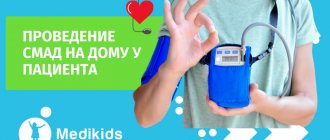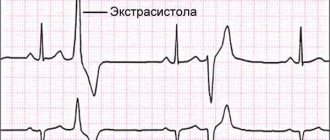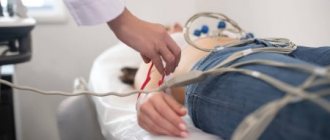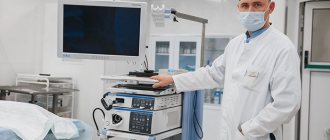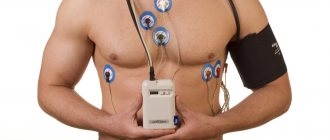Heart disease is exactly the case that is easier to prevent than to treat later. It’s simpler, cheaper and more correct from all points of view, because, by and large, you will have to treat heart disease for the rest of your life.
Many cardiac abnormalities cannot be detected during a single electrocardiography procedure. The problem may appear and disappear at certain intervals.
The results of this diagnostic method
The nurse or cardiologist removes the Holter monitor from the patient, and the patient, in turn, provides completed records of physical activity; the symptoms shown require further interpretation.
The doctor, taking into account the results obtained, the doctor can make a diagnosis, if necessary, prescribe appropriate treatment, or when the origin of the detected disorders is not clear, the specialist will prescribe further examination to the patient.
For example, a patient will need to wear a device that records their heart rate for a short period of time. The patient can independently activate it; to do this, they only need to press a button during the period when cardiac symptoms of a serious nature appear.
Also, while determining changes in the process of blood supply to the heart muscle, the patient may be prescribed to do a stress electrocardiogram, and in some cases even perform angiography.
Decrypted data
On the results sheet you will see the following indicators.
| Index | Norm |
| Average heart rate during the day | 60–100 beats per minute |
| Average heart rate at night and during daytime sleep | 41–81 beats/min |
| Daily graph of heart rate changes | Changes when changing activities |
| Number of supraventricular extrasystoles | Up to 960 supraventricular extrasystoles per day (up to 40 pcs. per hour) A slight excess of the norm (up to 1200 pcs. per day) does not pose a threat to life and health |
| Number of ventricular extrasystoles | The absolute norm is 0. The permissible quantity that does not threaten life and health is 200 pcs. per day |
| The duration of the QT and PQ intervals and the schedule of their changes. | Normal QT interval: 340–450 ms (0.34–0.45 s) for women and 340–430 ms for men PQ – 120–200 ms |
Note! The norms indicated in the table are averaged and do not take into account age and individual characteristics of the body. Ask your doctor about the norm for you personally.
Installation method for such a device
Before fixing the device on the patient’s body, the doctor will recommend taking a shower. This is explained by the fact that water should not get on the patient’s body for at least 24 hours, since the monitor cannot be removed.
The doctor attaches the electrodes to the patient’s chest, determines, and, if necessary, adjusts their correct position. Then the electrodes are connected to the wiring of the device that conducts the fixation. The device is attached to the patient’s body using appropriate straps.
The doctor instructs the patient and talks about the correctness of keeping a diary, which will subsequently allow him to correctly interpret the information that will be received from the device.
The patient will need to record periods of physical activity, sleep, rest and wakefulness, including the appearance of all symptoms: the occurrence of pain in the chest, the appearance of arrhythmia, tachycardia, etc., and the exact time should be indicated. Once the device is installed, the patient can begin to carry out their daily activities and lifestyle.
Holter monitoring does not cause any pain; the patient may feel some discomfort only while wearing the device. The patient is recommended to lie only on his back during sleep, as this will help to avoid displacement of the electrodes, which may interfere with the recording of indicators.
Stages of Holter monitoring
- Strip to the waist
- Shave the hair where the electrodes are attached
- Degrease the skin before attaching
- The device is attached using a belt and connected by wires to the electrodes. You can also use other fastening methods that are convenient for the patient so that your hands are free
- The device records activity throughout the day
- The patient leads a normal lifestyle without limiting himself in anything. There are times when a doctor prescribes certain physical activities.
- Keeping a diary by the patient himself
- Monitoring can last from 1 to 7 days (a day is the minimum research period)
- After the procedure is completed, the doctor makes an analysis based on the data received from the device and makes a diagnosis (all data is stored in the device’s memory and then decrypted).
Have questions?
You can get detailed information about services and prices and make an appointment by phone. Information about the location of our clinic and directions can be found in the Contacts section.
HOW TO REMOVE HOLTER FROM A PERSON YOURSELF VIDEO
Holter monitoring: description of the technique, reviews. The Holter monitoring technique has been used by cardiologists for more than half a century, since this is the only way to obtain reliable data on the functioning of the heart throughout the day, not. When I didn’t sleep for about a day due to work, my blood pressure showed under the upper level and arrhythmia) also Holter. coffee and energy drinks are calculated based on external signs (unhealthy complexion, increased sweating, hand tremors). Holter monitoring, which will not be done in this case, will be described below, is a special device (recorder). And the doctor should tell you how to sleep with a Holter. It is necessary to ensure that the electrode is tightly attached to the body.
How to clean a LG air conditioner yourself video
Watch how the video is made by liking
How to learn belly dancing at home yourself video lessons
Video of a woman taking off her clothes
How to insert a nose piercing with a hook yourself video in Russian
Memo for the subject
To achieve the most accurate result, you must follow the following rules:
- Use clothes made from natural fabrics. No metal elements or too loose clothing.
- Maintain the temperature of the device at average values
- Do not allow the device to come into contact with liquids
- Do not expose the device to vibrations
- Keep a distance from transformer boxes and similar structures
- Limited use of mobile phones and other similar devices.
- Do not subject the device to deformation
- Monitor the position of the electrodes on the body
- Determine the possibility of physical activity
Holter ECG, or daily heart monitoring: the essence of the examination
To obtain the above data, an electrocardiogram (ECG) is needed over a long period of time. To do this, electrodes similar to a conventional examination are attached to the patient’s body and connected to a wearable cardiac recorder. The information is read by the device and recorded on a memory card, and then transferred to the functional diagnostics doctor for interpretation and conclusion. Such an examination can last up to seven days.
24-hour ECG monitoring was first used by American biophysicist Norman Holter in 1952, which is why the method is often called the “Holter ECG.” With the advent of this technology, it has become much easier to identify disturbances in heart rhythm and conduction, clarify the cause of sudden fainting, evaluate the performance of the pacemaker, and identify ischemic changes in the patient.
A heart monitoring device (monitor) looks like a small box with a memory card inside. Wires are connected to it, leading to several disposable electrodes on the patient's body. The recorder itself is in a case on the belt to make it convenient to carry. After the end of the daily ECG, the electrodes are removed, and the device is connected to a computer, where the data becomes available to the doctor. The main condition for wearing the device is physical activity, unless there are contraindications.
In some cases, the patient is also prescribed a daily blood pressure measurement. Then a tonometer cuff is added to the equipment described above, which records blood pressure and also transmits information to the monitor.
The recorder records the heart rhythm during the day, and the patient at this time keeps a diary in which he records the time of sleep, work, eating, walking up the stairs, etc. The doctor may also ask the patient to perform tasks while wearing the monitor: for example, spend 5 minutes lying in a certain position (on the back, side, stomach) and indicate the time in the diary. So daily ECG monitoring will be as informative as possible.
Indications and contraindications for 24-hour cardiac monitoring
Daily monitoring of heart function is prescribed in the following cases:
- to identify arrhythmia, if there are complaints of interruptions or pauses in the heart rhythm, too fast or very slow heartbeat, dizziness or fainting;
- to identify ischemic conditions (oxygen starvation) of the myocardium: the patient may complain of pressing pain in the chest, elbows and lower jaw;
- to monitor certain parameters of the pacemaker;
- to assess the effectiveness of the prescribed treatment.
Some heart rate monitoring devices allow for initial diagnosis automatically. But you should not completely rely on this data; the final conclusion can only be given by the doctor after analyzing the decoding of the data.
Other indications for cardiac monitoring are:
- strong heartbeat;
- angina pectoris;
- myocardial infarction;
- cardiomyopathy.
Only acute inflammatory heart diseases are considered a contraindication to daily ECG measurements. In all other cases, the examination does not cause harm (and is absolutely painless), including during pregnancy, childhood and old age.
Heart monitoring procedure: procedure
Many patients are interested in how 24-hour heart monitoring is carried out, how the device will be installed, and whether it is necessary to consult a doctor.
- First you need to get a doctor's prescription. There should be a clear direction for the purpose of the study, as well as recommendations: for example, whether any medications taken should be stopped while monitoring is carried out.
- Before the examination, you are advised to get enough sleep and start the day as usual. It is advisable to take a shower without lubricating your skin with anything after it. If there is hair on the chest, it should be shaved for better contact of the electrodes with the skin and subsequent painless removal. It is advisable to wear loose clothing to hide the device and electrodes and to walk comfortably with them. Women should not wear a bra with underwire.
- In the treatment room, a nurse places adhesive, disposable electrodes on the front of the patient's chest. Usually there are five to seven of them, but the number can reach up to 12. Sometimes one electrode is attached closer to the groin. The device itself is in a special bag; it can be hung around your neck, over your shoulder or on your belt.
- The recorder is also turned on by the nurse, and after that the device no longer needs to be touched until the end of the examination. Sometimes the patient is instructed to press a button at a certain moment, but this does not happen every time.
- Daily heart monitoring is not necessarily carried out throughout the day. The duration of the study is determined by the doctor. After the appointed time has expired, the patient returns to the treatment room, where the device and electrodes are removed from him, the quality of the data recording is checked, and they are sent for decoding.
- During the examination, the cell phone should not be in your pocket, and it is also prohibited to approach electrical devices with radiation.
Examination diary
An important point in obtaining high-quality research results is keeping a diary. It is imperative to record important moments during the day. For example:
- Taking medications
- Eating
- Dream
- Stress
- Activities
It is worth indicating the moments of change of activity, moments of ailments and unpleasant symptoms, as well as their exact time.
Benefits of Holter monitoring at home
- High information content of the study. ECG registration is carried out during the patient’s normal activity, for 24-72 hours, which increases the accuracy of the results. Allows you to comprehensively assess blood pressure levels throughout the day.
- Comfort. To carry out diagnostics, compact portable equipment is fixed on the belt. The device does not cause discomfort to the patient. It is important that you do not need to change your lifestyle and operating conditions in order to undergo diagnostics.
- Qualified specialists. The results are interpreted by experienced functional diagnostic doctors who specialize in diagnosing cardiac diseases.

